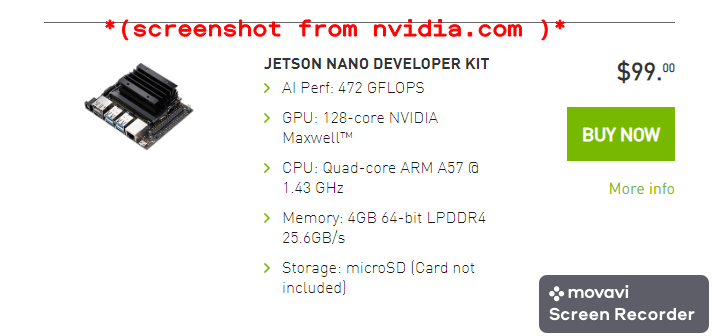Here we’ll give a basic overview of what AI (artificial intelligence) is and some of the technologies that allow the more advanced enthusiast to explore AI in some of its many forms.
We will show how to use affordable $400 hardware boards like the Nvidia Jetson Nano or its larger versions to make your robot do some things that $100 oo0 robots can do.
Now before we start defining terms like AI and machine learning we all sort of assume that we know what AI is when we see it.
We assume that if we can talk to a robot and it understands us and gives reasonable answers then we can be amazed that we just saw an example of amazing AI.
But actually faking AI is one of the easiest things to do if you were a startup looking to snag a few million dollars on your latest robot company.
You could create a good looking Disney World style robot or animatronic and use what is called telepresence or simply a microphone or web connection and answer every single question perectly because you would have a human operator at a remote location watching through the robots eyes and answering whatever questions you are asked.
Here Engineered Arts has a humorous example of how to use telepresence to make the person talking to a robot think that the robot has super human brain power. https://www.youtube.com/watch?v=ne7JuwefL1o
Now that is how to fake it.
So now we can talk about how to do AI for real and how its now possible to do it under $1,000 with boards and Opensource AI software that works off the cloud.
So stay on this site to get some explanations and feel free to go to this other site later to get more information if ou want with the free course from Google…the MLCC Machine Language Crash Course. https://developers.google.com/machine-learning/crash-course/ml-intro
Now yes a good grounding in mathematics is essential if one is pursuing topics like machine learning. This area is generally said to revolve around these 4 areas of maths: statistics, linear algebra, probability and calculus. You will quickly be immersed in talk about algorithms, matrices, vectors and more.
Now when you start to learn about machine learning and are beginning to do some programming you will probably be working with the Python language. So even without having a Raspberry Pi and Python nearby you can go to this google webpage and using the Colab online program you can enter and run Python code on the website. You simply sign into the Google account and here you can begin. https://colab.research.google.com/notebooks/intro.ipynb#scrollTo=P-H6Lw1vyNNd
You will quickly come across the terms Tensorflow and Keras. Basically Google developed Tensor flow as a collection of software libraries for deep learning for in house use and then released it into the Opensource movement for everyone to use. Keras is a set of libraries for work in neural networks.
Keras is easier to work with and is called a higher level library and is said to run above Tensor flow.
Keras is a greek word and was a part of a larger project called Oneiros which had to do with neural nets and robots.
You will see the use of the phrase Python notebook and this basically means that you can program in Python using a cloud based service like Colab from Google or the one from Jupyter or Kagle or Azure or Amazon.
Then you will see the terms that your python program can use the GPU and TPU of that cloud service. GPU is graphics processing unit and TPU is Tensor processing unit and is some type of accelerator for AI applications. By now…your head should be spinning if you are new to this AI area or python.
We will describe the difference between the terms machine learning and deep learning soon.
Deep learning is a form of machine learning and both fall under the umbrella of artificial intelligence.
To make it more confusing the term NLP or natural language processing, machine learning and artificial intelligence are often used to refer to the same thing but really both NLP and machine learning are subsets of the broader topic of artificial intelligence.
Also you can say that there are 3 types of AI or 7 types….there are different ways of categorizing it.
This whole area of AI and deep learning and machine learning has to do with data and massive amounts of it and ways to process it.
The more data you have and the more computer resources you throw at it…the closer you can get to better AI.
Its always been about the data…data mining. It allows companies to know what you want to buy online before even you know it….it allows your self driving car to stay in its lane and eventually…well who knows.:)
You must keep in mind also that AI does not have to be something that is placed into a physical object like a robot or a machine of some kind.
There are hundreds if not thousands of websites and phone apps that are using various forms of AI.
One of the biggest and most fascinating examples of this and machine learning involves the word GAN and much of it revolves around the Nvidia company.
We will talk about GAN in the next section.

Soon this sample video from 1997 will be replaced with a new video explaining the Jetson board.